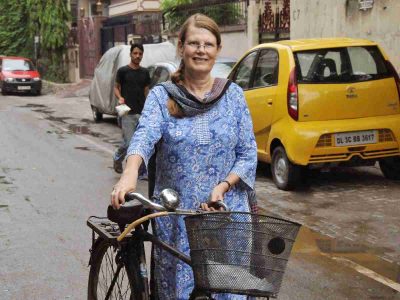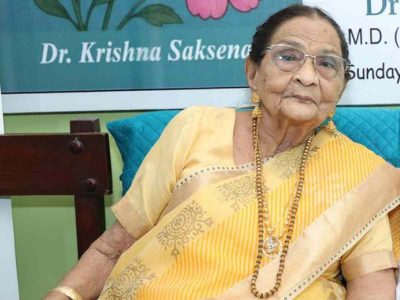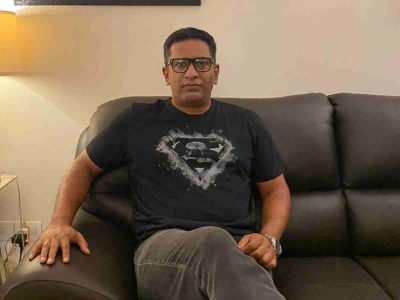Shreyasi Gopinath is one of the youngest professional practitioners of Bharatanatyam and a teacher. She has made it big in the world of classical dance
Shreyasi Gopinath, 27, a modern girl who likes to party with friends, is a regular to Monkey Bar. But that’s where her similarity with a typical Delhi girl ends. She is a renowned exponent of Bharatanatyam and a teacher as well. Dance is a joy of movement and the heart of life comes naturally to her. Her mother Deepa Gopinath is her best friend and manager. Together they form a great team.
Shreyasi speaks half a dozen languages, has made unusual choices in life, is one of the very few professional dancers who has made it big at this early stage of her life. She was a shy girl, grew up with her mother in a south Delhi flat. A glass full of milk mixed with freshly ground turmeric at 7 am every morning is a daily reminder that her best friend is also her mother. Their house is sparsely furnished, clean and organised; declutter of immediate space is often a reflection of the state of mind. It serves a practical purpose as well, there’s a lot of space to dance.
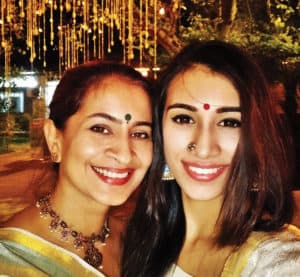
A shy girl becomes a professional dancer. Dance is a potent force of transformation. She as a child would watch classical dance performances, her maternal grandmother was keen that someone in her family should be a dancer. She started taking lessons when she was 8 years old. Like many teens she had issues growing up, being shy is just one of them. “Dancing was joy,” she recollects and while dancing she felt “all is fine.” It was her quality time with her own self and a beautiful way to communicate with her inner reaches. She was happiest when she was dancing, helped her break open the shell she found herself in.
Shreyasi decided very early in life she wants to be a professional dancer and then there was no confusion about it. Deepa wanted her to finish school, but when she turned 15, after clearing the tenth board examination, joined Kalakshetra — a teaching institution on the lines of Gurukul dedicated to the preservation of traditional values in Indian art and crafts, especially in the field of Bharatanatyam dance and Carnatic music — in Chennai. Her first guru was Saroja Vaidyanathan and later she was trained by Jamuna Krishnan, who recently died. This week Shreyasi gave an enthralling performance at India International Centre in the memory of her Guru Jamuna and won many hearts.
She spent the next six years of her life there. Not just Bharatanatyam, she learned vocal music, Kathakali, and some more art forms. Those were the years of learning, would practice dancing for eight hours a day. She had many good friends, but there was little in terms of a love interest as many male fellow students, already very few, weren’t particularly interested in women. So there were little distractions. A blessing in disguise.
If classical dance form is a language, Shreyasi is certainly very expressive. There are two main constituents of Bharatanatyam, the ‘abhinaya’ or the drama that involves facial expressions and the ‘Nirtta’ or the dance mudras and steps. To express a situation requires “calculations; permutation and combination” are akin to choosing the right words to best express an emotion. When performing the ‘abhinaya’ is in sync with her audience, but when she was rendering the ‘Nirtta’ she gets into a trans, the whole world ceases to exist for those few minutes, is a meditative process.
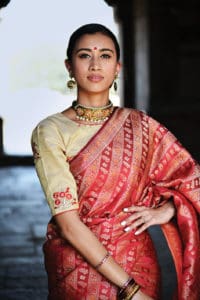
She has many gurus and seniors, at the same time inspires many youngsters. She is a big fan of Vyjayanthimala Bali and Madhuri Dixit, for their “eyes talk”. To Shreyasi eyes are the most expressive part of the body and she’s blessed with ‘mirgha-naini’ or big expressive eyes of an antelope.
She comes across as a person interested in things around her and open to suggestions, an easy person to communicate with as she likes to talk without filters. Things changed after she returned to Delhi from Chennai. She started performing solos, her work was appreciated and she celebrated as a “prodigy”. There were hurdles, and resources, or lack of it, is always a challenge in the initial days. She had an advantage, her mother is her manager. A case is not very different from many of the legends like Rekha, Hema Malini, Madhubala, Saira Banu to name a few.
To be a classical dancer is an expensive proposition. A costume alone, stitched out of a Kanjeevaram sarees, can costs at least Rs 15000. And then there are musicians and the entourage who have to be paid. She started teaching, has her own academy in Vasant Kunj and also teaches at Mandi House. Some of her disciples are elderly people and foreigners as well. She also takes classes via Skype. It’s a blissful state to be in when your passion becomes your profession. She is a happy person.
Bharatanatyam has not just given Shreyasi a profession, open many doors unto her. A private person, Shreyasi, now finds herself overwhelmed with friends. “It happened suddenly,” she says. The discipline that’s integral to performing a classical artform hasn’t made her a stickler for tradition and orthodoxy. She is open to good things and experiences in life.
A deeply rooted girl with a global perspective, Shreyasi is a good example that both these qualities are not mutually exclusive. She has travelled across the globe to perform, also with her mother backpacking in the Alps.
Shreyasi is regular to a gymnasium, does yoga, pilates and attends Zumba and boxing classes. Beware! But a mother is always a mother first. A glass turmeric-milk at seven in the morning is a must and waiting for Shreyasi to arrive home from a party till late in the night still makes Deepa anxious. They both make each other secure in this uncertain world. Shreyasi aptly describes her mother as, “as my Rampuri knife”.


